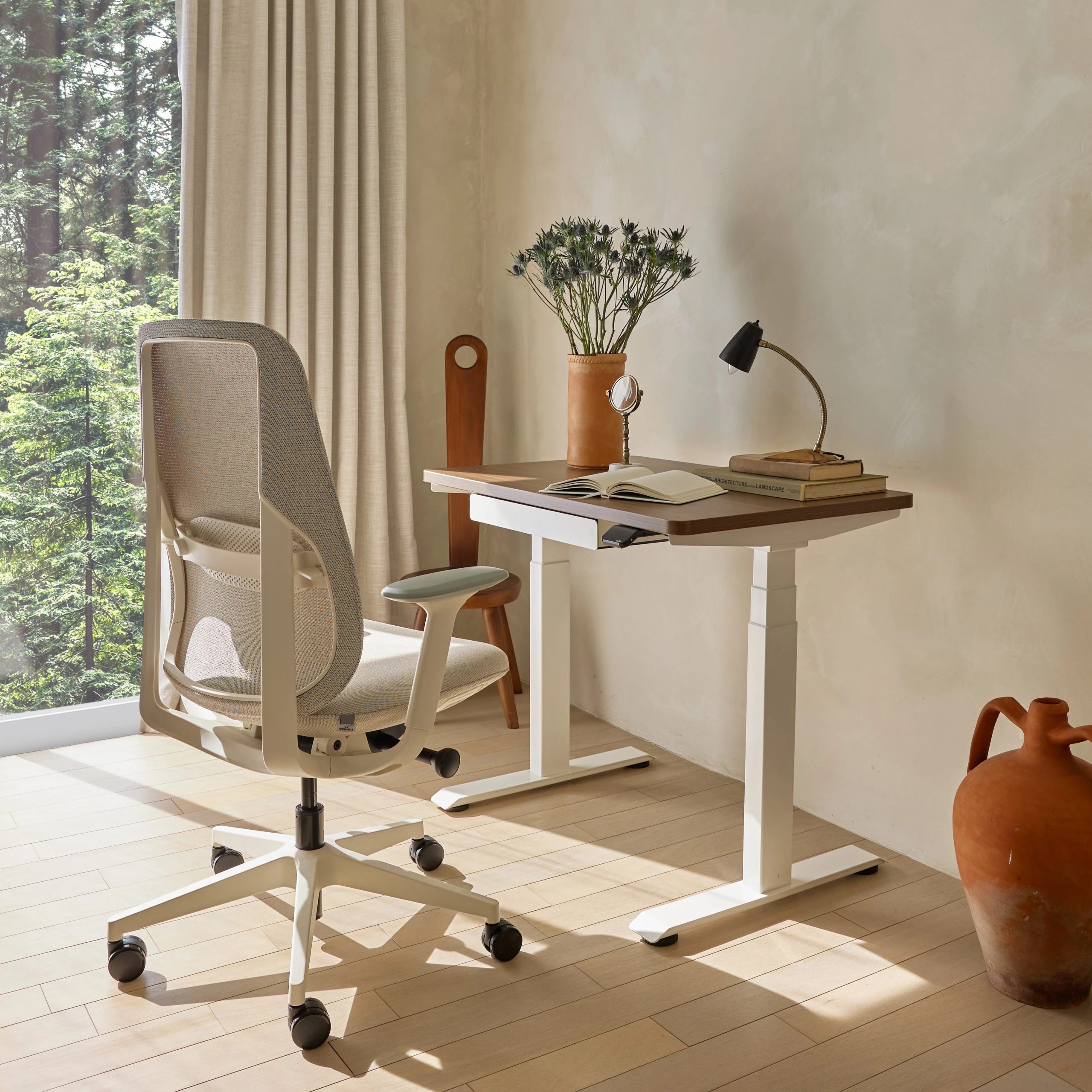You sit at your desk. The chair’s cushy enough. Your screen’s more or less at eye level. Nothing feels off—until it does. That faint ache in your neck? The tightness in your wrist? They don’t scream, but they whisper louder every day. And just like that, what looks like a comfy setup turns into a silent saboteur.
The problem with poor ergonomics is that the damage creeps in. One hour becomes five. One day becomes a week. Before you know it, your body’s sounding alarms you can’t ignore anymore.
And here’s the kicker—most of us don’t even realize it’s happening.
When “Fine” Is Anything But
Ever finished your workday with a stiff neck or sore wrists, even though nothing seemed wrong while you were at it? That’s no coincidence. Our bodies try to adapt to bad positions—but there’s only so much adjusting they can do.
What starts small can grow into serious issues:
- Stiff shoulders and neck pain from screens placed too high or low
- Wrist tension from poorly angled keyboards
- Lower back strain from chairs without support
- Eye fatigue from glare or bad lighting
If your setup isn’t working with your body, it’s working against it.
To truly support your posture and productivity, consider upgrading to smart, functional home office furniture that’s designed for daily comfort. A better space means a better you.
The Workplace Injuries No One Talks About
Think injuries only happen on job sites or in the gym? Think again. The modern desk setup—especially when not designed with ergonomics in mind—can be just as damaging.
And these injuries aren’t dramatic, but they’re long-lasting:
- Carpal Tunnel Syndrome – numbness or tingling from constant wrist pressure
- Tendonitis – inflamed tendons in your arms or shoulders
- Chronic lower back pain – nagging and unshakable
- Muscle burnout – especially in the arms, legs, or neck
- Tension headaches – born from tight muscles and bad posture
These don’t just hurt—they slow you down.
Want to fight these symptoms head-on? Start by choosing the right gear, like ergonomic chairs that offer support from 9 to 5. Little upgrades can lead to big changes.
Bad Ergonomics = Bad Focus
Let’s be honest—how focused are you when your back’s throbbing? When your fingers start tingling mid-email?
Discomfort kills focus. You fidget. You pause. You walk away. All that lost time adds up.
Bad setups cause:
- Less focus
- More breaks (and not the good kind)
- Slower typing and clicking
- Mental burnout
- More mistakes
A proper workspace helps you stay in the zone longer. That’s where design meets function—and where brands like Urbanica’s ergonomic shop shine.
Need help getting the word out about ergonomic solutions like these? That’s where the pros at Worldigital come in. They’re a digital marketing agency that knows how to turn great products into must-have trends.
It’s Not Just Adults at Risk
Kids and teens aren’t spared. Remote learning and gaming have them glued to screens too. And if they’re hunched over a tablet or lounging with a laptop on their bed? That’s the fast track to future back problems.
Keep an eye out for:
- Slouching at desks
- Twisted necks to see screens
- Hours of laptop use in awkward positions
- Lack of lumbar support
Posture habits start young. Set them up for success with smarter setups now.
Small Tweaks, Big Wins
You don’t need to overhaul your whole office. A few quick fixes can spare you years of discomfort:
| Ergonomic Tweak | What To Do |
| Screen Position | Eye level—no tilting your head up or down |
| Chair Support | Use one that hugs your lower back |
| Keyboard Height | Keep wrists relaxed, elbows at 90 degrees |
| Lighting | Use natural or soft light to protect your eyes |
| Footing | Keep feet flat or use a footrest |
Want a shortcut to a better workspace? Browse modern furniture collections designed for comfort and style—they make good posture look even better.
Movement Is Magic
Even the best setup can’t save you if you never move. Sitting too long without breaks is one of the biggest hidden risks to your health.
So here’s how to keep your body in motion:
- Get up every 30 to 60 minutes
- Stretch often—arms, back, legs
- Use the 20-20-20 rule (look away every 20 minutes for 20 seconds at something 20 feet away)
- Walk around while on calls
- Try standing desks when possible
When your body moves, your brain works better too
Takeaway: A healthy workspace isn’t a splurge—it’s survival. Your back, your wrists, your neck—they’ll all thank you. Start simple. Be consistent. And if you’re ready to make your space truly work for you, don’t just sit there—do something about it.
FAQs
An ergonomic workspace setup reduces physical strain, prevents long-term injuries, and helps you stay comfortable and focused during work hours.
Frequent issues include back pain, carpal tunnel, tendonitis, neck stiffness, and eye strain—often caused by bad posture and improper furniture.
Start with a supportive chair, adjust your screen to eye level, keep your feet flat, and use natural lighting. Small tweaks can improve comfort instantly.
Every 20 minutes, look at something 20 feet away for 20 seconds. This helps reduce eye strain from staring at screens too long.
Yes. Discomfort leads to more breaks, lower focus, and slower performance. A better setup helps you work longer and more efficiently.

